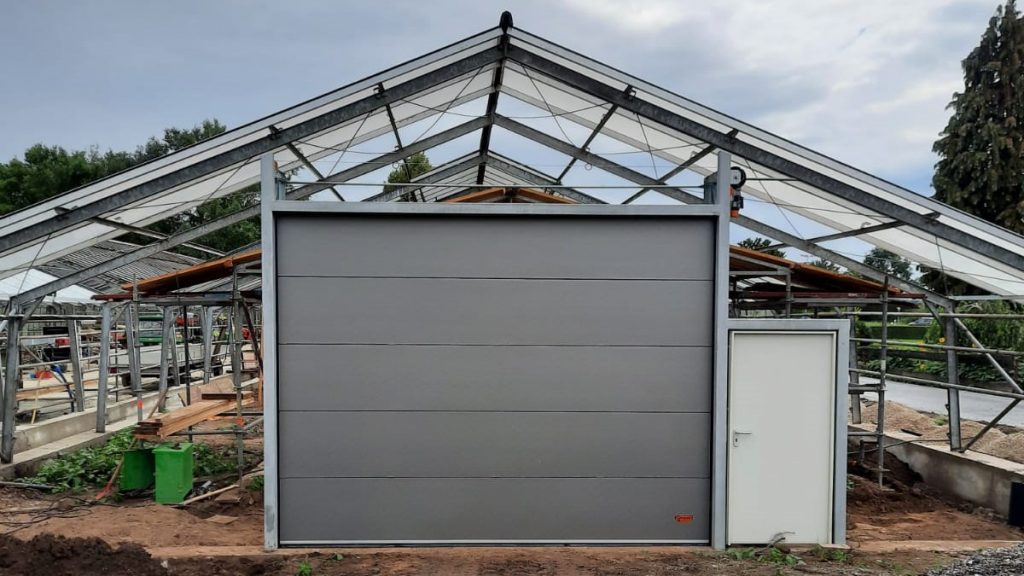The Compact door is a door that does not require any rail structures on the ceiling. That saves a lot of work during installation. The Compact door only has side rails and a folding package above the door opening. As a result, different things have to be taken into account with the mounting surface of this door than with a conventional overhead door. If the door is properly installed on a solid and level surface, long-term problem-free use of the door is guaranteed. We would be happy to explain what to look out for.

1. A sturdy construction. The door can be installed on any surface. It is important that the installation frame is flat and stable. The Compact door only needs two vertical bars or walls on the side for installation. A overhead door, on the other hand, requires a load-bearing roof structure, for which you need a solid ceiling in addition to a stable installation frame. The lintel is not necessary for the Compact door.
2. A flat mounting surface. The side rails and folding plates of the door are installed next to and above the door opening. To ensure that the door is securely positioned over its entire length, the surface must be level. Fill in all the gaps so that the fasteners have sufficient grip. Also think about the upper room. The folding plates are (partially) installed above the door opening, so there must be a sufficiently solid surface above the door opening for installation.
3. Everything in balance. The mounting surface on both sides must be flush. If one of the surfaces is too far to the front or to the rear, the door cannot function properly. Double-check this carefully before installing. This is not only very important for a folding door, but also for standard overhead doors. However, with overhead doors the ceiling suspension must also be fitted precisely so that the door can run smoothly inwards over the rails.
4. The lintel. The lintel is not required for the construction. The door lies completely against both sides. However, in order for the upper seal to bond properly, a lintel is required. The lintel then does not have to bear any weight, but merely serves to seal the door. A overhead door, on the other hand, requires a structural lintel because the torsion springs are located there and the door runs inwards above the door opening. This type of door requires twice as much space as the Compact door.
5. Did you know that the Compact door not only saves space, but also costs less to maintain than a standard overhead door? This is because the Compact door does not have any torsion springs. These springs must be re-tensioned and serviced annually and replaced after 16,000 movements.

With a suitable and solid surface and professional installation, you will ensure a good start for the new Compact door. Would you like to learn more about Top space, Side space, etc.? Then read the following articles:
- What are the minimum and maximum dimensions of the Compact folding door?
- How do I measure the correct Compact door size?
- How much free space do I need around the Compact door?
Do you have any doubts about the robustness of the installation frame? Please contact us and we will be happy to help.